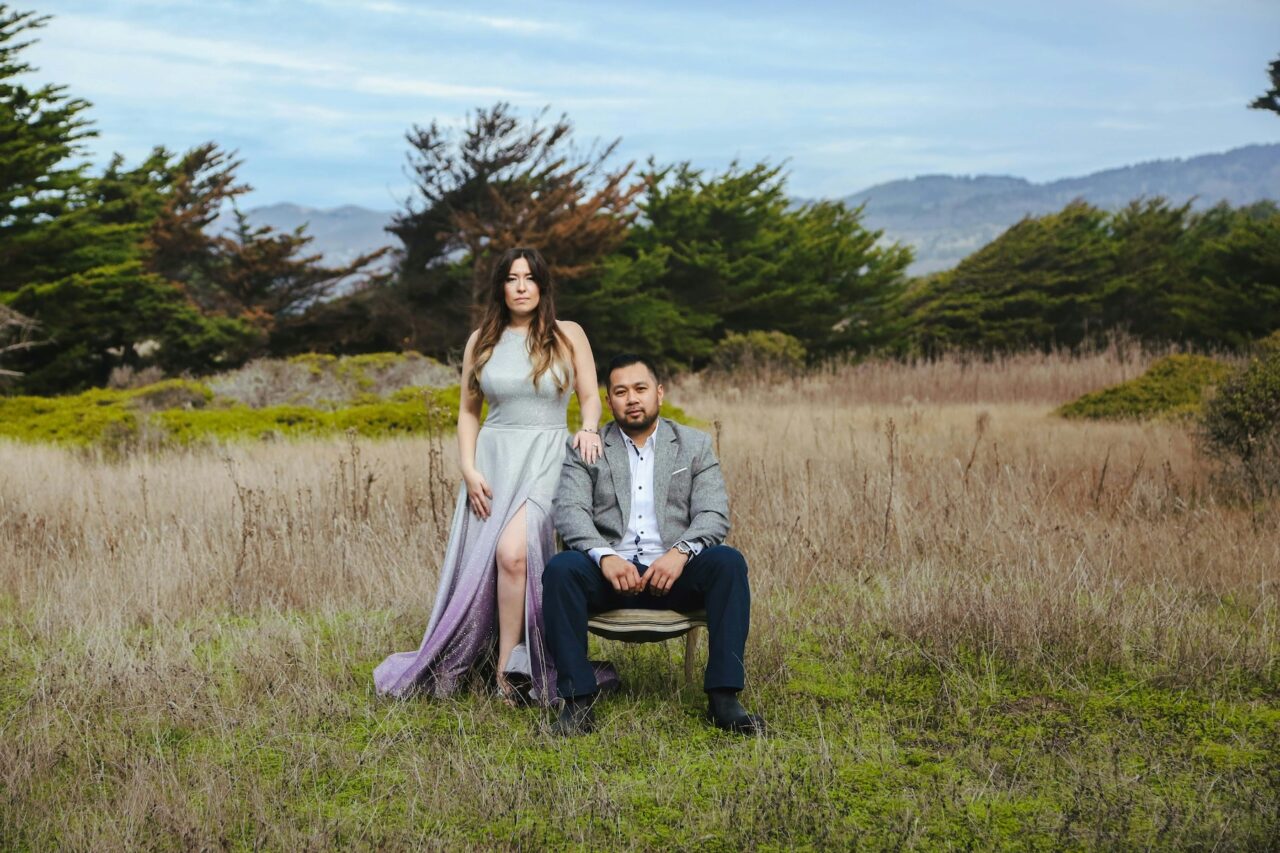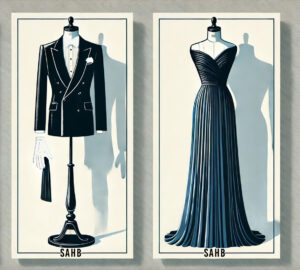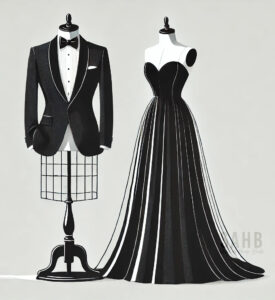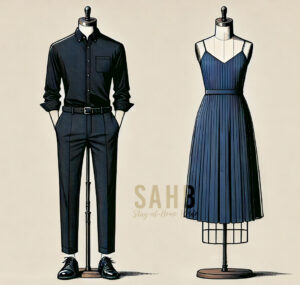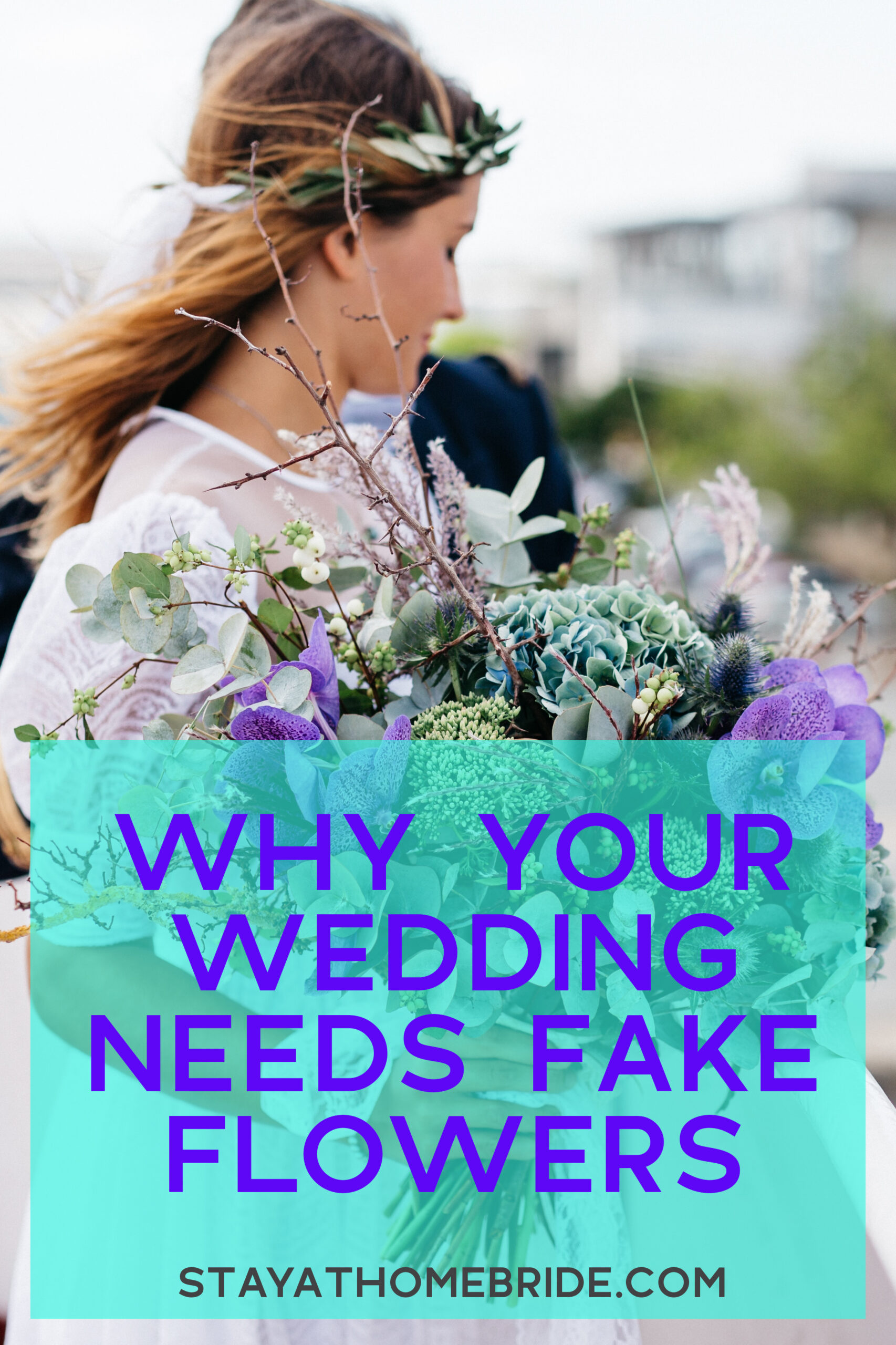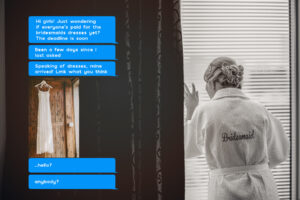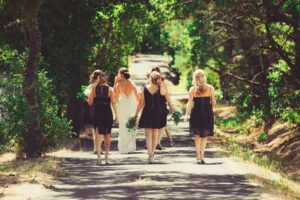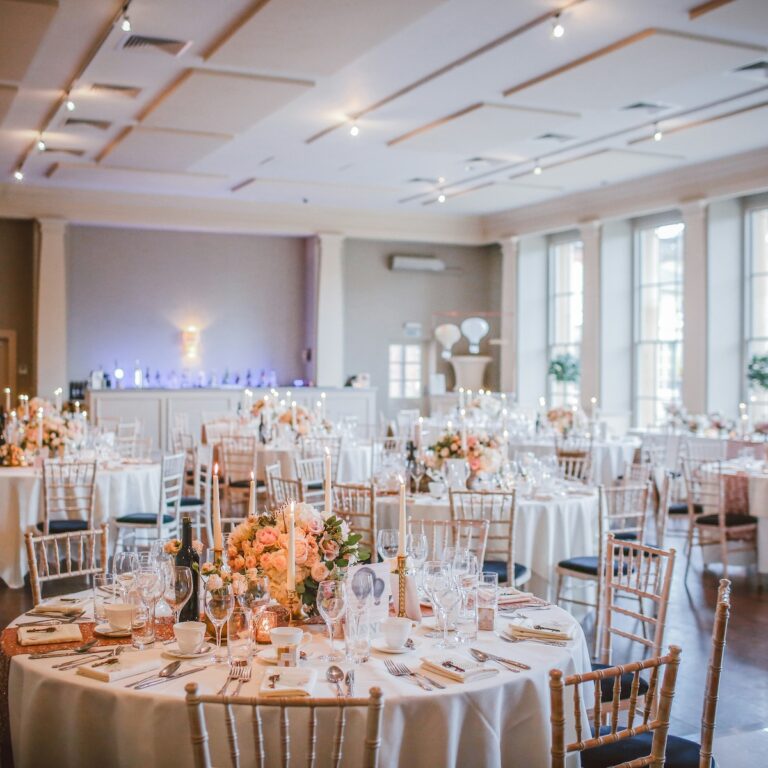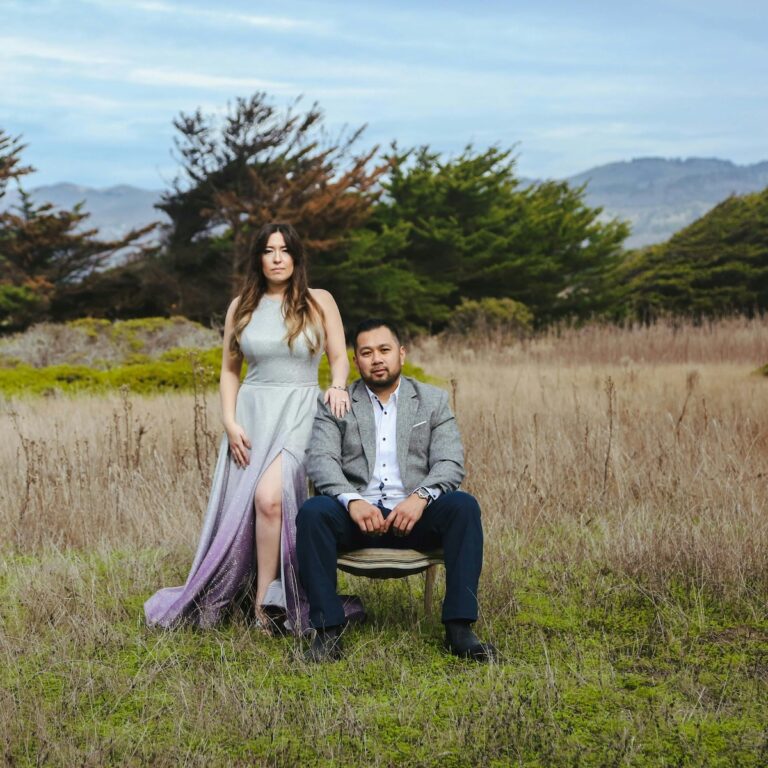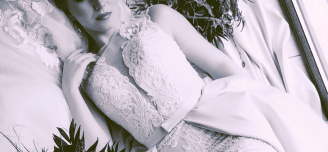When some brides picture their wedding, every piece of the puzzle is in place—down to exactly how formal or informal their ceremony, reception, and even their guests’ outfits will be.
Some instantly envision a grand ballroom with marble pillars, dramatic uplights, and black-tie ensembles. Other brides might see a rustic and charming barn with string lights, their guests in Sunday casual attire.
But for some brides, that portion of their wedding is a total mystery—and if you’re here, you’re probably one of them.
Don’t fret: choosing your wedding’s formality level (and, by extension, your guests’ dress code) doesn’t have to be as complicated as it first feels. Below are 5 sources of inspiration to drill down your wedding’s attire.
But first, let’s quickly recap what each formality level entails.
The 7 Basic Wedding Dress Codes and What They Mean
1. White-Tie Formal
This is the ultimate, fanciest dress code out there. It requires formal evening gowns that reach the floor for women, and tuxedos with gloves and a bow tie for men.
2. Black-Tie Formal
A step below White Tie, this option still requires floor-length (or just above the shoes) dresses and tuxes, but without the extra touches of heels for women or gloves for men. It’s best reserved for evening weddings, so steer clear if your wedding is a midday affair.
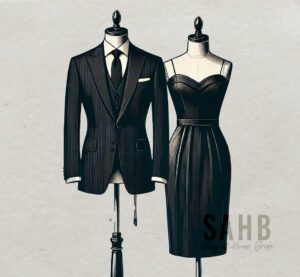
3. Formal Or Black-Tie Optional
One of the most popular wedding attire standards, Black-Tie Optional gives guests a little more freedom in what they wear. Men can wear tuxedos or dark suits. Women can choose long dresses still (though their shoes/ankles no longer have to be covered), but also opt for cocktail dresses. Pantsuits are also allowed.
4. Cocktail
Vying for popularity with a Black-Tie Optional dress code is Cocktail Attire. Dresses can range from tea- or knee-length to midi, with longer dresses permitted in more casual styles (versus the evening gowns of previous dress codes). Men should wear suits with ties, not tuxes.
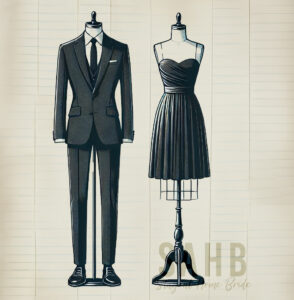
5. Semi-Formal Dressy Casual
While this dress code sounds like a mouthful, it’s really just a way of saying “Look nice, but stay comfortable.” Think church attire—dresses that don’t go above the knee for women, or nice skirts and shoes. Men can wear suits, but also stick with a classic combo of button-up shirts and slacks—with or without a tie.
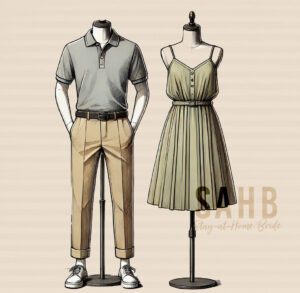
6. Casual
A laid-back, yet still nice, option for guests is “casual attire,” but this doesn’t mean jeans or Crocs! Many people consider this to be true “church attire,” with women in slightly more casual dresses and men in nice pants and a button-up shirts, or at least something with a collar—think nice Polos and such.
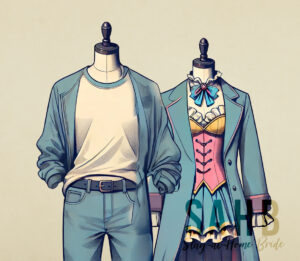
7. Other
Encompassing a rather broad range, “other” simply means any specifications that aren’t common for weddings, but might suit yours perfectly. There’s the “Come as You Are” option (where guests can wear anything they want), as well as themed dress codes, like cosplay or all-white. If you choose to get that specific, consider adding it to your Save the Dates as well as your invitations, so guests have ample time to shop.
5 Tips for Choosing Your Wedding’s Ideal Dress Code
1. Look at your Pinterest boards and other wedding inspiration, first.
The easiest place to discern your wedding formality level is wherever you’ve saved ideas for your overall wedding style.
If your Pinterest boards or group chats with the bridesmaids are filled with, say, converted factories downtown—industrial spaces brightened with greenery and white lights—your wedding style likely errs towards contemporary verging on modern. You’re drawn to clean, minimalist (but not sterile) design.
In that instance, your ideal dress code would be “black-tie optional” or “cocktail”—the two tiers just below black-tie formal. It’s a style that invites both class and trendiness.
On the other hand, let’s say your wedding style is rustic with country charm: lots of nature, barns, string lights, and Mason jars fill your wedding inspo boards.
A daytime wedding would call for casual or semi-formal, while an evening rustic wedding might suit cocktail formality.
2. Think of your guests’ styles, comfort levels, and incomes.
While you can’t possibly accommodate every single guests’ preferences when it comes to clothing requirements, you should take an honest look at your guest list and decide if your ideal formality level suits most of them.
For example, if your guests hail from rural areas and make their living in blue-collar trades, “White Tie” is likely to feel deeply unfamiliar and uncomfortable to them—even if it suits your elegant, fairy-tale wedding in a ballroom perfectly.
Consider stepping down to something like “Black Tie Optional,” so guests have more options.
Luckily, the reverse of this isn’t really an issue: even if your guests are all young professionals from a busy city, Casual or Semi-Formal isn’t going to make them uncomfortable. Some might err on the side of overdressed, if that’s what they’re used to wearing to weddings—but that’s a pretty good problem to have, usually.
If your wedding is a mixture of guests from different backgrounds (as most are), consider the formality levels with the most range: Semi-Formal Dressy Casual, or a step above to Cocktail. Most people have clothes that can fit into either category, or the means to afford clothing that suits those.
3. Consider your venue—or, if you haven’t picked it yet, picture your dream venue—and your wedding’s time of day.
The where and when of your wedding is critical to choosing an approporiate dress code.
Generally speaking, the earlier in the day your wedding is, the less formal the dress code should be—and vice-versa.
And if it’s outside, less formality suits it best. Indoor weddings, the opposite. (Though keep in mind, this isn’t a hard-and-fast rule; the style of your venue matters too.)
Midday beach weddings shouldn’t have Black-Tie Optional dress codes, because that’s too formal—and your guests will probably be sweaty and uncomfortable before you even say “I do.”
Likewise, an evening wedding at a hotel ballroom doesn’t necessarily lend itself to Casual or “Come As You Are” attire. On the other hand, Semi-Formal or Cocktail, all the way to Black- or White-Tie, could fit the ambiance perfectly.
Finally, remember the season of your wedding. Summertime in the South is not fun in a floor-length dress or full tuxedo!
Fortunately, the reverse isn’t quite the same: if you’re getting married in fall or winter, guests can and will adjust their attire choices to keep warm.
Still, it might be wise to up your attire formality level just a little—say, Black Tie Optional—so longer dresses and full suits or tuxes, the perfect clothes for keeping warm, won’t make guests feel overdressed.
4. If you’re stuck between two formality levels, split the difference.
There’s no law that says you have to choose just one formality level! Pick two wedding attire dress codes, and use both on your invitations or wedding website.
Just make sure they’re adjacent options: you can’t put “Casual or Black Tie,” because then it encompasses everything in between and confuses guests.
But “Semi-Formal Dressy Casual or Cocktail Attire” is a perfect combo, giving guests a defined yet broad range to choose from.
5. Going broad with the dress code? Reconsider—and set at least some guidelines.
Speaking of going too broad, exercise caution when you open up guests’ options.
Counterintuitively, people don’t do well with too many choices. It sounds like it’d be appreciated and freeing, but it’s actually frustrating for wedding guests to see things like, “Come As Your Are” or “Church Attire,” or even themed attire codes like “Christmas Outfits.”
Why? Because those categories are still vague, and open to too much interpretation.
Every church has different formality levels, so saying, “Church Attire” doesn’t really tell your guests what you expect. Some people wear jeans to church: are those allowed? What about flip-flops and T-shirts?
Themed weddings, while fun, also need more guidelines. What kind of Christmas clothes—tacky sweaters? Formal red and green dresses?
Don’t be afraid of getting over-specific. Guests appreciate your guidance, and actually need it. State outright what is not permitted, when applicable. For example: “Church attire (no jeans, please).”
Additionally, consider adding an alternative for guests who do not want to, or can’t, take part in your themed dress code. “Appropriate Halloween costumes encouraged; semi-formal attire also permitted” gives guests an option—while also telling anyone partaking in the theme that their costume needs to be tasteful.
Remember: Ultimately, You Can’t Control What Guests Wear
At the end of the day, you can’t stop a guest from donning jeans and a T-shirt to your wedding—or, for that matter, a full-length, formal white dress.
Yes, it’s generally considered rude for them to do that. But their ignoring your attire requirements will reflect poorly on them—not you.
That said, don’t decide not to choose any dress code at all! Even if you’re going with Casual or Come As You Are, and genuinely don’t care what guests wear, make it clear to them.
It’s important to specify for the rest of your guests—the one who’ll respect your wishes, and want your guidance on what to wear.
_______
Having trouble choosing your wedding’s dress code? Share your thoughts in the comments below!

